The 2019 China (Shaoxing) Second Integrated Circuit Industry Summit with the theme of "New Opportunities, New Integration, New Development" was held on November 15-16, 2019. This summit gave Shaoxing core momentum and was also a grand event for my country's integrated circuit industry.
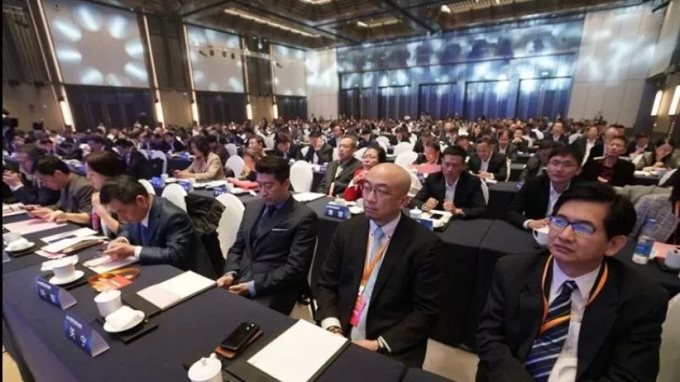 2019 China (Shaoxing) Second Integrated Circuit Industry Summit
2019 China (Shaoxing) Second Integrated Circuit Industry Summit
The summit attracted more than 300 IC experts, scholars and industry representatives to exchange and discuss the opportunities and challenges of the integrated circuit industry in the new era, identify future market hotspots and applications, and discuss the development plans of Shaoxing's integrated circuit industry.
Rising Star
The conference was hosted by Sheng Yuechun, deputy secretary of the municipal party committee and mayor, and many leaders delivered speeches. Ma Weiguang, secretary of the municipal party committee, expressed a bright prospect for Shaoxing integrated circuits. Secretary Ma said that Shaoxing will provide a larger platform and better services, accelerate the formation of an industrial ecosystem, and contribute to China's integrated circuit industry.
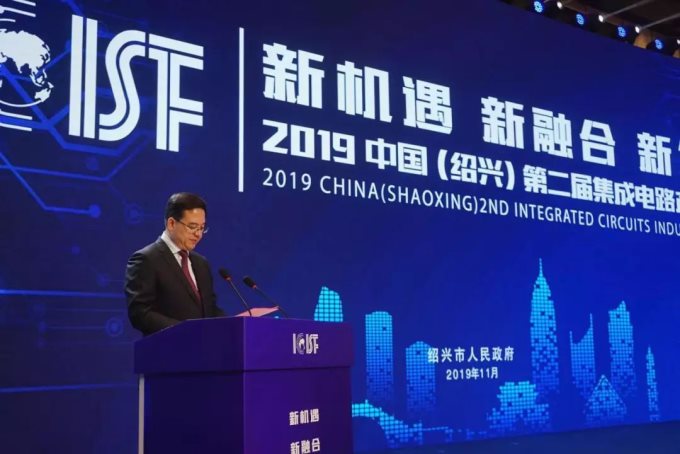
Shaoxing Municipal Party Committee Deputy Secretary and Mayor Sheng Yuechun
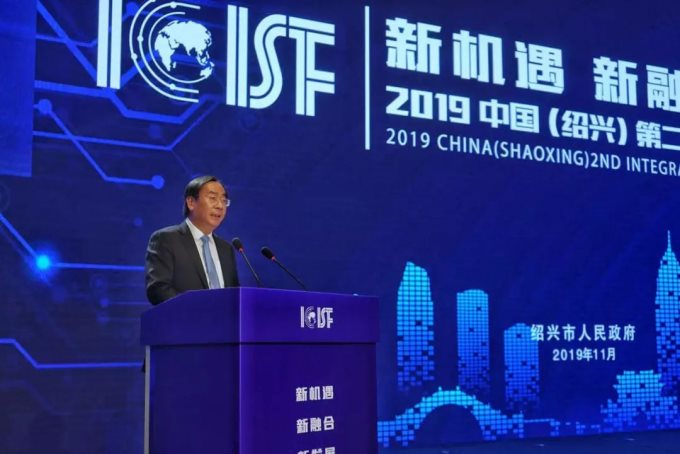
Ma Weiguang, Secretary of the Shaoxing Municipal Party Committee
Ms. Qiu Aici, an academician of the Chinese Academy of Engineering, pointed out in her speech that Shaoxing has developed rapidly in recent years. The precise positioning of the Shaoxing Municipal Party Committee and Municipal Government has enabled the integrated circuit industry to make significant progress. In the future, Shaoxing will become an integrated base for more integrated circuit industries.
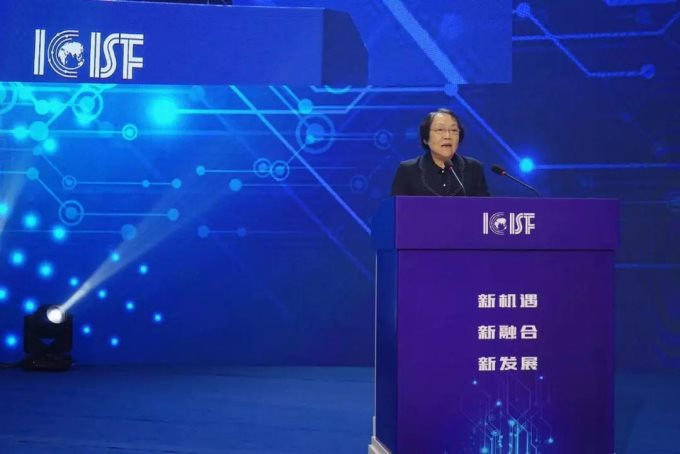
Ms. Qiu Aici, Academician of the Chinese Academy of Engineering
Cui Lin, deputy director of the International Cooperation Center of the National Development and Reform Commission, said that vigorously developing the integrated circuit industry is of great significance to national development. At present, the development of my country's integrated circuit industry faces problems such as insufficient innovation and R&D of high-end products, and lacks competitive advantages. It is hoped that Shaoxing will work together with all sectors of society to embark on a new path of innovation and integrated high-quality development.
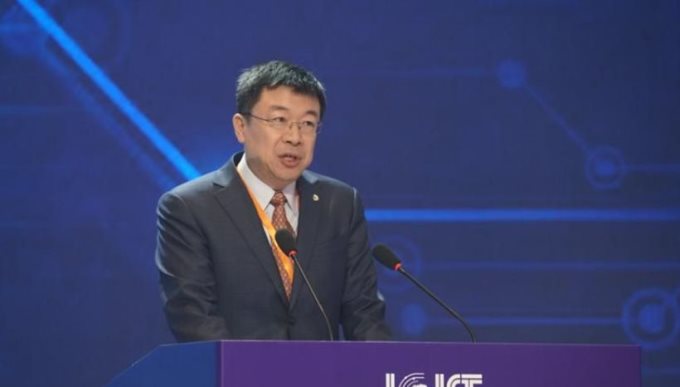
Cui Lin, Deputy Director of the International Cooperation Center of the National Development and Reform Commission
Li Xinshe, deputy director of the National Industrial Information Security Development Research Center (First Institute of Electronics of the Ministry of Industry and Information Technology), said that in recent years, the country has introduced policies and invested funds to vigorously promote the development of the integrated circuit industry. Shaoxing has a 2,500-year development history. Developing the integrated circuit industry in the long-standing Shaoxing is a perfect fusion of ancient and modern. Shaoxing City covers design, packaging, testing and other fields in the integrated circuit industry. It is hoped that in the future, Shaoxing Integrated Circuit Town will become a national-level integrated circuit town.
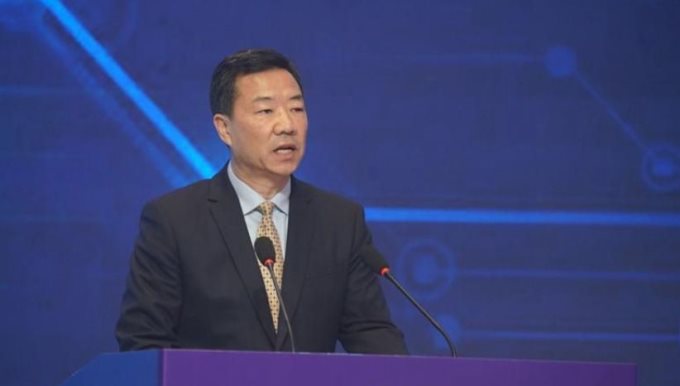
Li Xinshe, deputy director of the National Industrial Information Security Development Research Center (First Institute of Electronics, Ministry of Industry and Information Technology)
Gao Xingfu, Vice Governor of Zhejiang Province, pointed out in his speech that integrated circuits are an industry that Zhejiang Province focuses on cultivating and developing. With the successful implementation of the SMIC Shaoxing project and the Changdian Shaoxing project, Shaoxing will be able to achieve rapid expansion of the industry scale and rapid improvement of its industrial innovation capabilities.
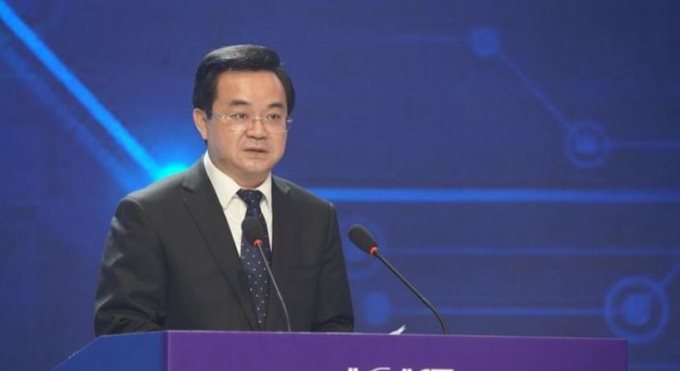
Gao Xingfu, Vice Governor of Zhejiang Province
Ren Yu, director of the Management Committee of Shaoxing Integrated Circuit Industrial Park, gave a brief introduction to the grand blueprint of Shaoxing Integrated Circuit Town covering 10,000 acres and worth 100 billion yuan.

Ren Yu, Director of the Management Committee of Shaoxing Integrated Circuit Industrial Park
With the help of the golden opportunity period of multiple strategies, Shaoxing's integrated circuit industry is currently experiencing rapid development. In recent years, Shaoxing has vigorously developed the integrated circuit industry. A number of leading companies in wafer manufacturing, packaging, and testing, such as SMIC, Changdian Technology, and OmniVision Technology, have settled in the city. The integrated circuit industry platform has been selected into the first batch of provincial "10,000 mu and 100 billion" new industry platform cultivation list, and the "Shaoxing Integrated Circuit Industry Innovation Center" has been successfully included in the "Outline of the Yangtze River Delta Regional Integrated Development Plan".
The Shaoxing Integrated Circuit Innovation Complex Project is a landmark project and the first project of the Shaoxing Integrated Circuit Industrial Park as a new industrial platform of Zhejiang Province with a total investment of 5 billion yuan and an area of 188 acres. The project consists of three plots: A, B, and C.
At present, the complex has attracted more than 10 integrated circuit companies to settle down, including Huinuo Electronic Materials, Ading Intelligent, Yaoxin Technology, Weixin Technology (Shaoxing), Fermi Technology, Gaosheng Semiconductor, and Zuicheng Semiconductor. It has introduced 330 overseas talents, more than 100 integrated circuit professionals such as Yuezhou Talents, etc.
At the meeting, Changdian Technology (Shaoxing) 300mm integrated circuit mid-channel advanced packaging project was officially launched. Vice Governor Gao Xingfu, Municipal Party Committee Secretary Ma Weiguang, Deputy Municipal Party Committee Secretary and Mayor Sheng Yuechun, Changdian Technology CEO Zheng Li, Huaxin Investment Third Department General Manager Fan Xiaoning, Zhejiang Financial Holdings Chairman Zhang Qicheng, Municipal People's Government Deputy Mayor Shao Quanmao, Shaoxing Yuecheng District Party Committee Secretary Jin Xiaoming, Changdian Technology Consultant Lai Zhiming jointly opened a new chapter for the Changdian Shaoxing project.
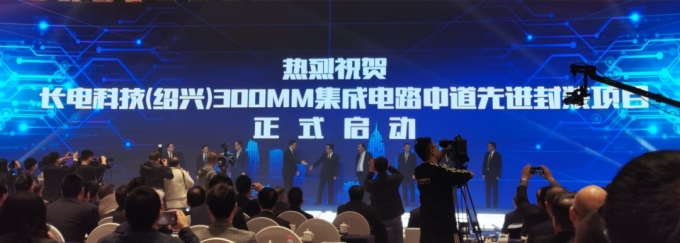
The total investment of the SMIC Shaoxing project is 5.88 billion yuan. It is a key project for the development of the entire industrial chain of Shaoxing Integrated Circuit Town. After it goes into production, it can achieve an annual output value of 4.5 billion yuan. The project will build an integrated circuit 8-inch chip manufacturing production line and a module packaging production line.
Subsequently, at the project signing ceremony, a series of cooperation agreements and projects were signed, including the Advanced Productivity Assessment and Information Security Strategic Cooperation Agreement, the Shaoxing Integrated Circuit Industry Strategic Cooperation Agreement, the Industry-University-Research Talent Cultivation Strategic Cooperation Agreement, the Xianjun Wafer Testing and Wafer Reconstruction Production Line Project, the Benno Electronic-Grade Adhesive Product R&D and Manufacturing, the Huajing Sensing Shaoxing Packaging Base Project, and the Zuicheng Semiconductor Equipment Core Components and Consumables R&D and Manufacturing Base Project.
These collaborations will build a better platform for the development of Shaoxing's integrated circuit industry in terms of policies, talents, funds, etc., and inject stronger development momentum. Since the beginning of this year, Shaoxing has contacted more than 60 integrated circuit industry projects, with an agreed investment of more than 200 billion yuan. Shaoxing's integrated circuit industry is accelerating and setting sail.
As the co-organizer of this summit, Mr. Gu Wenjun, chief analyst of Xinmou Research, commented: Shaoxing is definitely a model for the development of the semiconductor industry in a late-developing city. In just three years, Shaoxing has attracted large projects such as SMIC and Changdian, and has become a leading company in manufacturing, packaging and design. In the past two or three years, Shaoxing has become a hot city in the semiconductor industry and has achieved leapfrog development.
How should the semiconductor industry develop?
Wu Shengwu, global vice president of Tsinghua Unigroup, pointed out at the meeting that the country has repeatedly emphasized that integrated circuits are a national strategic emerging industry. The core technology must be in our own hands. We must abandon illusions and be self-reliant. We cannot do research and development behind closed doors. Integrated circuits have become the focus of national strategic competition and the game between major powers. The integrated circuit industry cannot do without the support of the government, technology, talents, funds and the market. At present, the integrated circuit industry presents a situation of head gathering and winner-takes-all. With the continuous advancement of innovation and technology, this feature will become more obvious. At present, the United States is prominent in the semiconductor industry and firmly controls the dominant position.
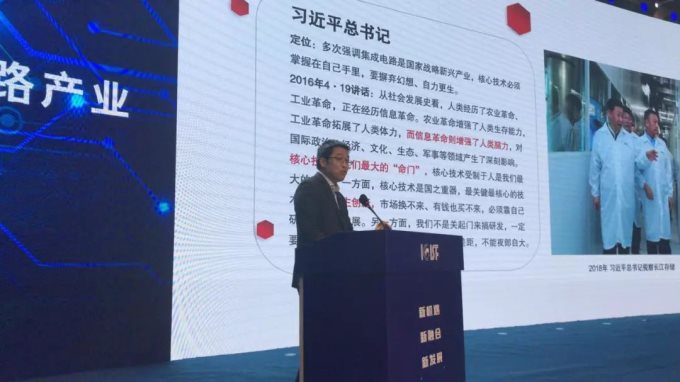
Wu Shengwu, Global Vice President of Tsinghua Unigroup
Although the industrial development situation is grim, under the strong leadership of the Party Central Committee and the National Integrated Circuit Industry Development Leading Group, my country's integrated circuits have achieved rapid development, with an average annual growth rate of about 15%. The scale of the industry has also doubled. Since 2012, the scale of the industry has maintained an average annual compound growth rate of more than 20%, which is more than three times the global growth rate during the same period. In 2018, the cumulative output reached 173.95 billion chips. At present, my country's industrial chain has been gradually established, forming a pattern of coordinated development of integrated circuit design, manufacturing and packaging and testing. Emerging fields such as 5G communications, cloud computing and AI will become the driving force for the development of integrated circuits, and the largest development area in the future may be in the automotive field.
Chen Wei, chairman of Silergy Semiconductor Technology Co., Ltd., said that there has never been a period when technological innovation is as important as it is now. In the competition of technological strength, chips are a track where hundreds of boats compete. At present, the global pan-analog chip market is nearly 100 billion US dollars, and China is the world's largest analog chip market. The scale of my country's analog IC market accounts for more than 60% of the global scale, but the domestic production rate is less than 15%. Although the domestic analog IC market is huge, it is mainly concentrated in European and American companies, especially high-end analog chips, which are basically dependent on imports. At present, the global analog industry landscape is mainly dominated by European and American IDM giants. The gross profit margins of industry leaders TI and ADI are all above 60%, and these are all IDM companies.
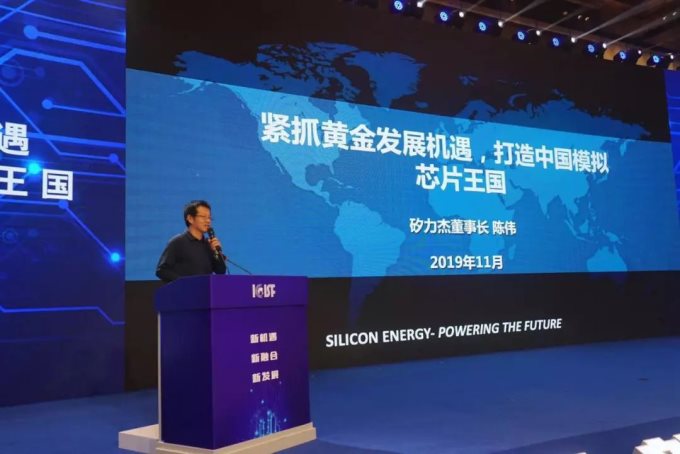
Chen Wei, Chairman of Silergy Semiconductor Technology Co., Ltd.
Therefore, the IDM model is the inevitable choice for China's analog chips to grow bigger and stronger. Chen Wei explained that China's analog industry is relatively scattered and lacks international leading companies. Analog chips require a deep combination of design and process, and high-end analog chips require independent production process support. IDM companies can improve product performance and reduce production costs through customized manufacturing processes.
Huang Qing'an, director and professor of the Key Laboratory of MEMS of the Ministry of Education at Southeast University, pointed out in his speech that the revolution in the information technology industry has brought about the vigorous development of industries such as mobile communications, medical care, automobiles, and the Internet of Things, and has promoted the fission transformation of life and production methods. At present, the nine major application trends of MEMS and sensors are smart cars, mobile phones, 5G, big data centers, AR/VR, artificial intelligence/machine learning, intelligent voice processing, medical and health monitoring, and Industry 4.0. At present, the global MEMS and sensor wafer manufacturing plants will increase by 25%, reaching 4.7 million wafers/month in 2023.
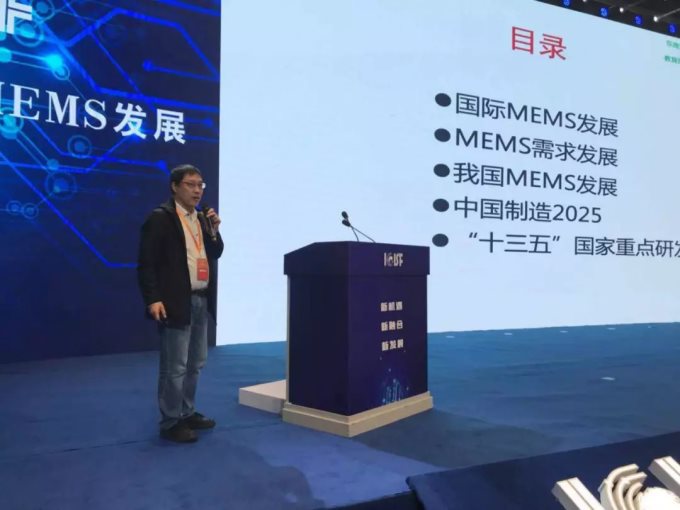
Huang Qingan, Director and Professor of the Key Laboratory of MEMS of Ministry of Education, Southeast University
Sun Zhen, CEO of Shanghai Sirui Technology Co., Ltd., delivered a keynote speech entitled "Embrace the Internet of Things, Perceive the New Future". Sun Zhen said that in Industry 4.0, data is fundamental. Sensors are big data "excavators" and are very important devices. The Internet of Things is characterized by fragmentation, diversification, cross-domain, cross-platform, and timeliness. However, the "fragmentation" characteristics of Internet of Things applications are weakening, and some single application products with market demand exceeding tens of millions of sets per year have emerged, such as: smart speakers, anti-lost devices, driving recorders, etc., which makes it necessary and possible to define dedicated chips to achieve better integration and cost-effectiveness.
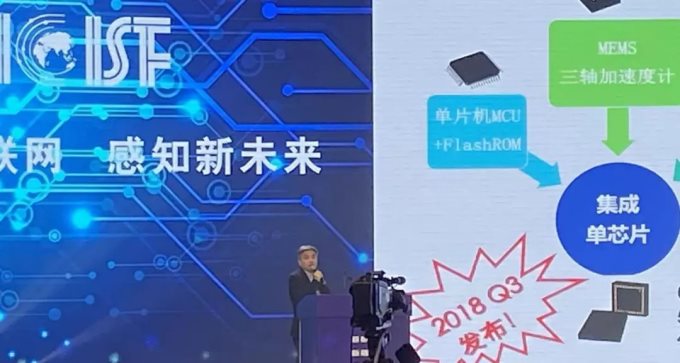
Sun Zhen, CEO of Shanghai Sirui Technology Co., Ltd.
At the same time, in the past period of time, sensor modules commonly used in industrial and agricultural equipment and systems have increased interoperability, making them a type of terminal node in the Internet of Things. The 5G standard supports the application of the Internet of Things/Internet of Vehicles, overcoming the limitations of wireless interconnection standards such as Bluetooth BLE, Zigbee, LoRa/Sigfox, and providing a platform-based foundation for the popularization of Internet of Things terminals.
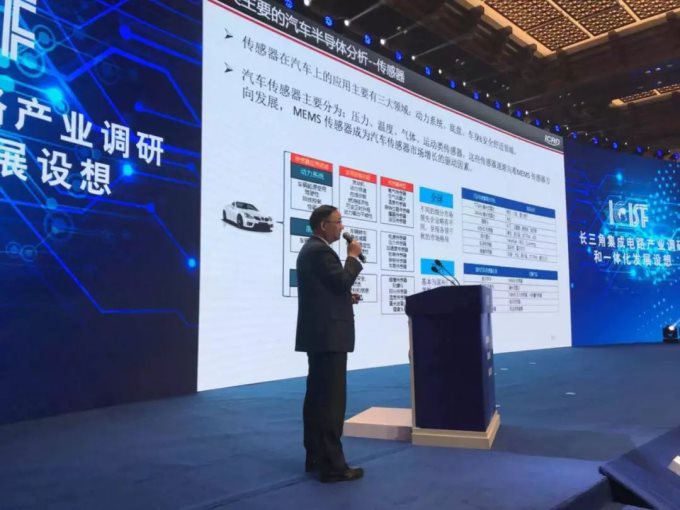
Chen Shoumian, President of Shanghai Integrated Circuit Research and Development Center Co., Ltd.
Chen Shoumian, president of Shanghai Integrated Circuit Research and Development Center Co., Ltd., said that self-controlled integrated circuits are the cornerstone of my country's strategic emerging industries. my country's integrated circuit products currently have a huge market, but the supply is insufficient. Advanced logic manufacturing process technology lags behind by three generations, memory manufacturing process is in short supply, and the industrial chain is still under control. At the same time, large funds are laid out, and the government and enterprises are leading the climax of chip factory construction. It is generally believed internationally that China is the last country and region with the conditions to expand the scale of the integrated circuit manufacturing industry.
The Yangtze River Delta is the birthplace of modern China's integrated circuit industry and bears important responsibilities and missions. However, the Yangtze River Delta is currently facing many problems. First of all, the main equipment and raw materials of the chip manufacturing industry still rely on imports, and the process technology lags behind the international mainstream advanced level and is difficult to reverse; at the same time, there is a lack of collaborative innovation mechanisms between enterprises and upstream and downstream of the industrial chain, and it is difficult to form "asymmetric" and "killer" technologies; the entire region lacks disruptive technology layout, world-class top talents, major original achievements and core technologies. If you want to carry out the coordinated development of the three provinces and one city, you must have a consistent strategy, unified planning, seek common ground while reserving differences, and implement it effectively. At the same time, connect with the national integrated circuit industry development strategy plan, jointly tackle key problems, and develop in a coordinated manner.
Lai Zhiming, consultant of Changdian Technology Co., Ltd., proposed that China's integrated circuit industry should strive for excellence. Patents are the core of the restriction on the development of China's chips. The scope of patent monopoly includes integrated circuit design, chip manufacturing, packaging and testing, equipment manufacturing, materials and other industries. If China's chips want to truly rise, the accumulation of patent effectiveness is the key.
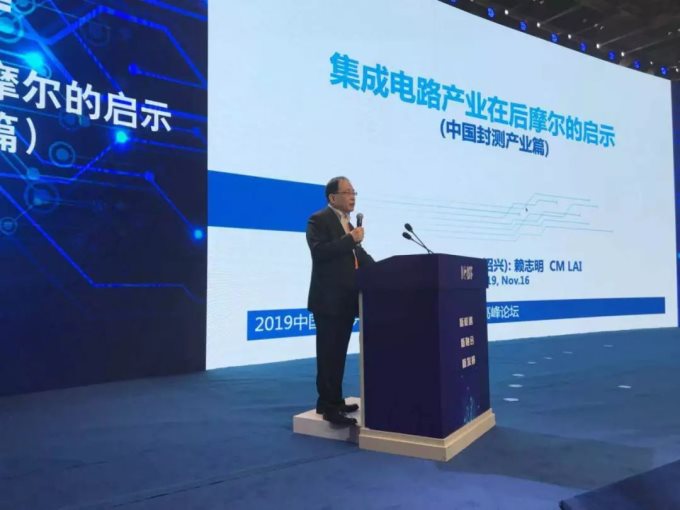
Lai Zhiming, consultant of Changdian Technology Co., Ltd.
Lai Zhiming summarized the development opportunities of China's integrated circuit industry. With the rise of China's industrial chain, the outsourced packaging and testing supply chain has gradually shifted to China; China's semiconductor industry has developed rapidly, but supply and demand are still seriously unbalanced, and the self-sufficiency rate is low; China's IC industry has price as its core advantage, and breakthroughs have been achieved in some areas; China's construction of storage market capacity outsourcing packaging and testing industry has brought market opportunities; many non-traditional IC companies have entered the ASIC AI chip field, bringing new market opportunities to the industry; the Chinese government strongly supports the integrated circuit industry, with many policies and clear goals.
JSP senior executive consultant Wen Zhong affirmed the important position of SiC in the semiconductor field. He said that SiC is in great demand in power devices. SiC is a composite semiconductor material based on silicon and carbon. Compared with traditional materials, SiC devices have lower impedance, which leads to smaller product design and higher efficiency; higher frequency operation can make passive components smaller; higher temperature operation means that the cooling system can be simpler.
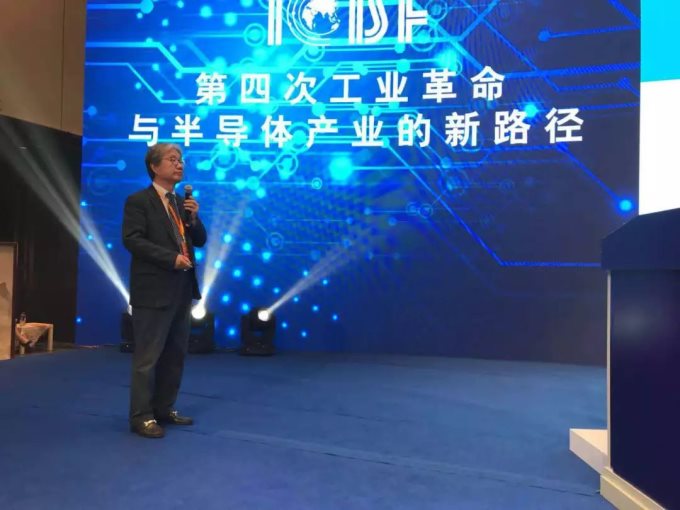
JSP Senior Executive Consultant Wen Zhong
Wen Zhong said that SiC devices will have a significant growth rate by 2024. As far as the current market is concerned, SiC has a more prominent advantage in high-power products. Therefore, at this stage, photovoltaic energy storage, data center server UPS and xEV are the driving forces for the development of SiC-related products. In addition, with the upgrading of the railway and wind power industries, these two markets will also expand the development space of SiC-related products in the future.
Cooperation leads to win-win situation
After the enthusiastic sharing of the industry leaders, the atmosphere of the conference reached a climax. Under the chairmanship of Zhang Jingyang, Chairman and CEO of Moore Elite, industry leaders and experts from both sides of the Taiwan Straits had interactive exchanges on the topic of "IC industry ecology under the new situation and opportunities for cross-strait integrated circuit industry cooperation and development".
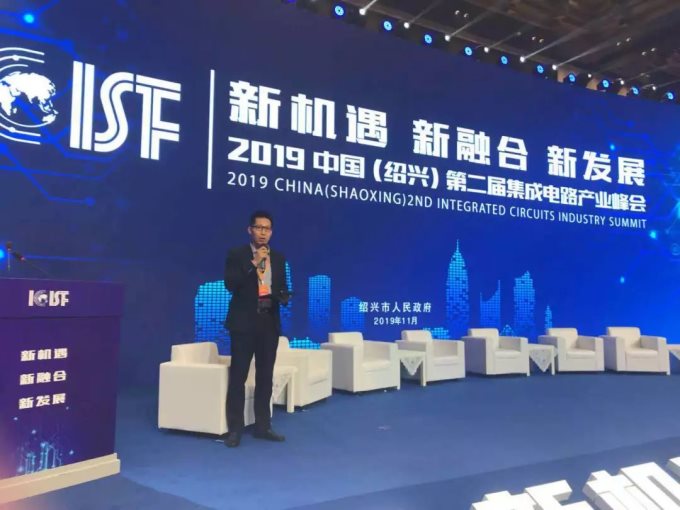
Zhang Jingyang, Chairman and CEO of Moore Elite
Zhang Jingyang pointed out that integrated circuits originated in the United States, and then developed in Japan, followed by South Korea and Taiwan, China, which also achieved good results, and gradually developed in the mainland after 2000. Taiwan also gave birth to global leading companies such as TSMC and ASE, so there are a lot of experiences worth learning.
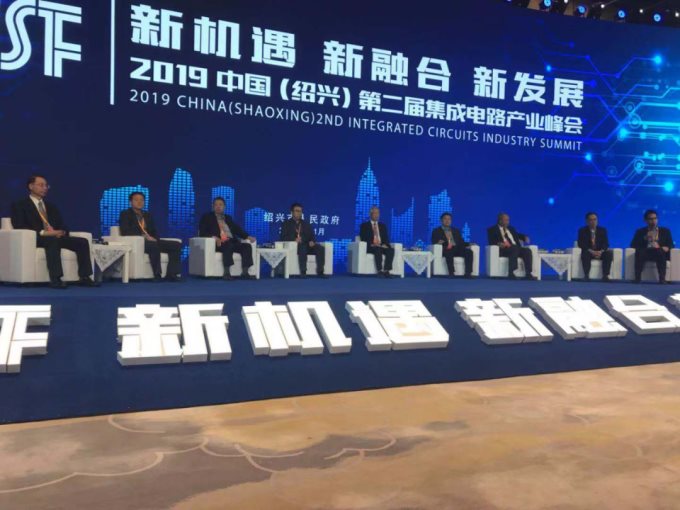
In this regard, Chen Junwei, former director of the Southern Taiwan Science Park Administration and chairman of the Taiwan Science Park Resource Sharing Association, said that Taiwan's transition from watching the development of world science and technology from behind the stage to performing on the world's science and technology stage is inseparable from the word "hard work". The so-called 4 shifts and 2 rounds were developed from IC companies. While the IC industry is developing, a positive and innovative cultural attitude has also been created, which will not only improve economic conditions, but also improve culture and the city's status. Shaoxing has good resources and should have developed the integrated circuit industry long ago.
Zhang Zuen, a distinguished professor of the Department of Environmental Engineering at National Cheng Kung University in Taiwan, analyzed the situation from an environmental perspective. He pointed out that a good environment is the foundation of life. Shaoxing has very good landscapes and historical and cultural heritage. Industrial design should have an integrated mindset in the planning stage, considering production issues and the environment together. Enterprises should have social responsibilities and achieve win-win results with society.
Zhang Zhiyuan, Secretary General of the Taiwan Science Park Industry Association, talked about Taiwan's rise from the perspective of talent. He pointed out that Taiwan's semiconductor industry started in 1970. In that era, a large number of returnees came back to start semiconductors from scratch. Taiwan has good policies, a high-quality investment environment, and excellent school resources, which have enabled the semiconductor industry to thrive. At the same time, Zhang Zhiyuan also pointed out that whether it is the semiconductor industry or other industries, cross-strait cooperation can achieve great results, and Taiwan compatriots are the best partners for the development of the mainland.
Li Yuanfu, former director of TSMC's Industrial Safety and Environmental Protection Department and vice chairman of the Taiwan Science Park Resource Sharing Association, gave his opinion from the perspective of the semiconductor production environment. Li Yuanfu pointed out that semiconductor factories are dust-free spaces. In the process of promoting production, safety issues are very important. Many factories were burned down because the environment was not well managed. The reliability of water supply, gas supply, etc. is very important. If the raw material control can be stabilized, it can become the lifeline of semiconductor production. Of course, we must also pay attention to the problems after discharge and avoid polluting the environment.
Several industry leaders in Taiwan gave different opinions from various perspectives, which are thought-provoking. In response, several leading figures in the mainland semiconductor industry also interpreted the topic from their own perspectives.
Wu Lifeng, CTO of Beijing HuaDa JiuTian Software Co., Ltd., pointed out that there are three important areas in the semiconductor industry chain: design, manufacturing, and packaging and testing. But there are also three small areas worth noting, namely materials, equipment, and EDA (electronic design automation). EDA can help engineers make designs, not only design, but also EDA software is used in manufacturing and packaging and testing. But at present, China is still a little behind the advanced world level in this field. Domestic company teams are making comprehensive arrangements in all aspects to catch up, and the development of the general situation can be seen. But we must also know that the rule of the semiconductor industry is winner-takes-all. Chinese companies must compete to the first echelon, cooperate within the industry chain and the industry, strengthen cross-strait cooperation, and develop together to become bigger and stronger.
Yang Qinghua, Chairman of Suzhou Hantianxia Electronics Co., Ltd., gave his thoughts on the talent issue raised by Secretary-General Zhang Zhiyuan. He said that there are more and more IC talents in mainland China, but there are still few talents who truly master advanced technologies. Taiwan has a group of top talents, which is where mainland enterprises, governments, and universities need to work hard. At the same time, Yang Qinghua pointed out that the semiconductor industry takes ten years to sharpen a sword, and manufacturers must be patient. Now is a golden opportunity for the development of the semiconductor industry. This industry perfectly combines national strategy, national destiny, and personal ideals, so semiconductor practitioners are lucky.
Li Yongzhi, general manager of Jiangsu Dagang Co., Ltd. and general manager of Keyang Optoelectronics, made a macro analysis. He pointed out that in terms of IC design, the gap between the mainland and Taiwan is not big. But there is a big gap in manufacturing. In many sub-segments, Taiwan has the world's top technology and the most advanced team, which is where the mainland needs to learn. At the same time, Keyang Optoelectronics has been committed to the packaging and testing of integrated circuit products. In this field, enterprises on both sides of the strait have made common progress in competition and cooperation.
Zhang Hong, vice president of the School of Microelectronics at Xi'an Jiaotong University, raised some problems in the mainland semiconductor industry from the perspective of education and put forward suggestions for improvement. Zhang Hong pointed out that the mainland's semiconductor education ushered in an opportunity in 2004. In 2004, the country introduced the National Integrated Circuit Talent Training Base, which involved 15 universities. At the same time, in 2016, the Ministry of Education supported 9 universities to build demonstration microelectronics colleges. These policies have improved the enrollment environment and teaching staff, but there are also shortcomings. First, the country's education evaluation system for outstanding returnees is insufficient, and we should learn from Taiwan's emphasis on IC design and other application fields. Secondly, most of the mainland's wafer production funds come from scientific research project funds, which are inevitably cramped, while Taiwan strongly supports universities' wafer production trial and error, an important link in talent training, which is worth learning from.
Summarize
Only through cooperation can the two sides of the Taiwan Strait achieve a win-win situation. While learning from Taiwan, the mainland is also constantly developing. Whether it is Shanghai, Shenzhen, a long-established semiconductor development city, or Nanjing, Shaoxing, a rising star, they are all growing through hard work and struggle.
At present, Shaoxing is comprehensively building the "four systems". Integrated circuits are an important engine and carrier for building modern industries, and their development is directly related to the future of Shaoxing's high-quality development. Through this summit, Shaoxing's integrated circuit industry can start planning from a higher starting point, build a higher-level industrial platform with high standards, and make greater contributions to the integrated circuit industry.
Previous article:SMIC's Q3 net profit was US$84.626 million, a 10-fold increase
Next article:Cree and ABB strengthen SiC collaboration to provide automotive and industrial solutions
- Popular Resources
- Popular amplifiers
- Vietnam's chip packaging and testing business is growing, and supply-side fragmentation is splitting the market
- The US asked TSMC to restrict the export of high-end chips, and the Ministry of Commerce responded
- ASML predicts that its revenue in 2030 will exceed 457 billion yuan! Gross profit margin 56-60%
- ASML provides update on market opportunities at 2024 Investor Day
- It is reported that memory manufacturers are considering using flux-free bonding for HBM4 to further reduce the gap between layers
- Intel China officially releases 2023-2024 Corporate Social Responsibility Report
- Mouser Electronics and Analog Devices Launch New E-Book
- AMD launches second-generation Versal Premium series: FPGA industry's first to support CXL 3.1 and PCIe Gen 6
- SEMI: Global silicon wafer shipment area increased by 6.8% year-on-year and 5.9% month-on-month in 2024Q3
- LED chemical incompatibility test to see which chemicals LEDs can be used with
- Application of ARM9 hardware coprocessor on WinCE embedded motherboard
- What are the key points for selecting rotor flowmeter?
- LM317 high power charger circuit
- A brief analysis of Embest's application and development of embedded medical devices
- Single-phase RC protection circuit
- stm32 PVD programmable voltage monitor
- Introduction and measurement of edge trigger and level trigger of 51 single chip microcomputer
- Improved design of Linux system software shell protection technology
- What to do if the ABB robot protection device stops
- Do you know all the various motors commonly used in automotive electronics?
- What are the functions of the Internet of Vehicles? What are the uses and benefits of the Internet of Vehicles?
- Power Inverter - A critical safety system for electric vehicles
- Analysis of the information security mechanism of AUTOSAR, the automotive embedded software framework
- Brief Analysis of Automotive Ethernet Test Content and Test Methods
- How haptic technology can enhance driving safety
- Let’s talk about the “Three Musketeers” of radar in autonomous driving
- Why software-defined vehicles transform cars from tools into living spaces
- How Lucid is overtaking Tesla with smaller motors
- Wi-Fi 8 specification is on the way: 2.4/5/6GHz triple-band operation
- Why is there a 50mV difference between the two input terminals of an op amp working in negative feedback?
- Award-winning live broadcast: Bluetooth 5.0, Thread, Zigbee, TI 15.4-Stack, multi-protocol management, all explained to you at once
- Programming implementation of volume control for media applications based on touchpad (Hot Wheels)
- Open Source ESP32 Color Screen WIFI/BLE Smart Multimeter Production Process (3. Frequency Duty Cycle Measurement)
- [Summary of power supply simulation data] 50+ power supply simulation analysis methods and simulation tool application resources
- Talking about IoT and 5G
- [Distributed temperature and humidity acquisition system] + STM32H745I-LWIP debugging process
- 【Recruitment】RF, chip, engineer
- 【TI recommended course】# Master the design of flyback power transformer and circuit#
- EEWORLD University Hall----Live Replay: Third Generation TI C2000? New Features and Resources Update

 5962-9175801M2A
5962-9175801M2A
















 京公网安备 11010802033920号
京公网安备 11010802033920号